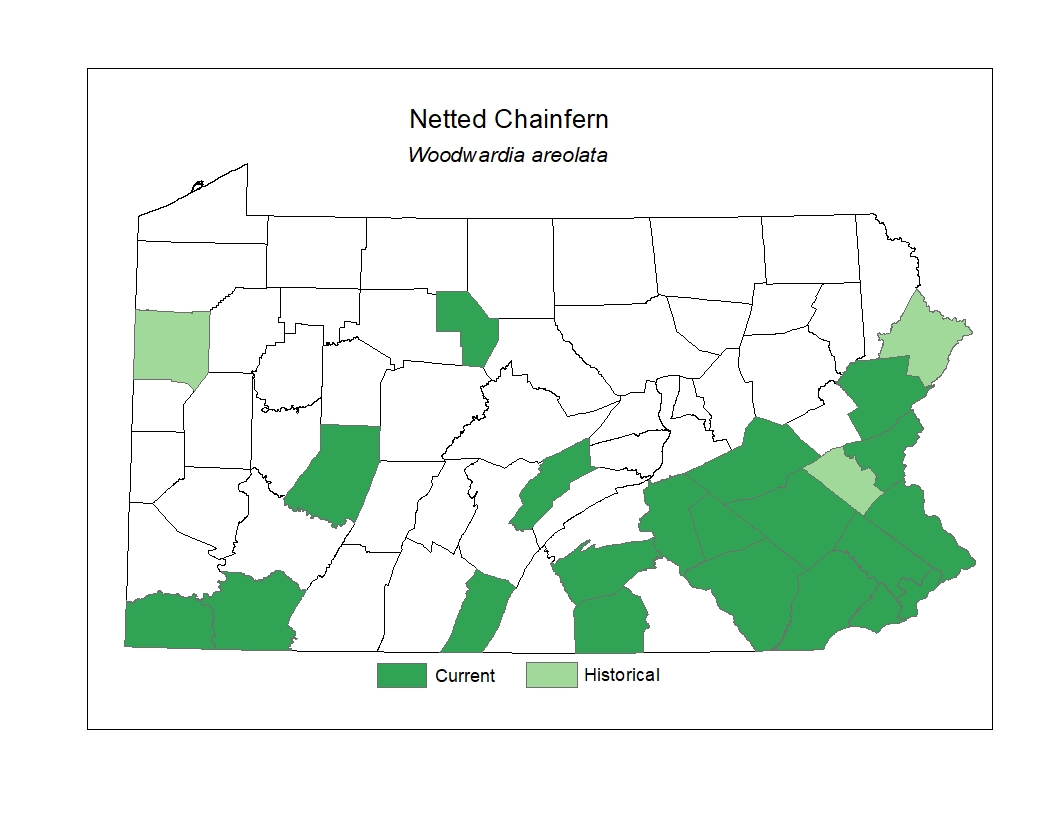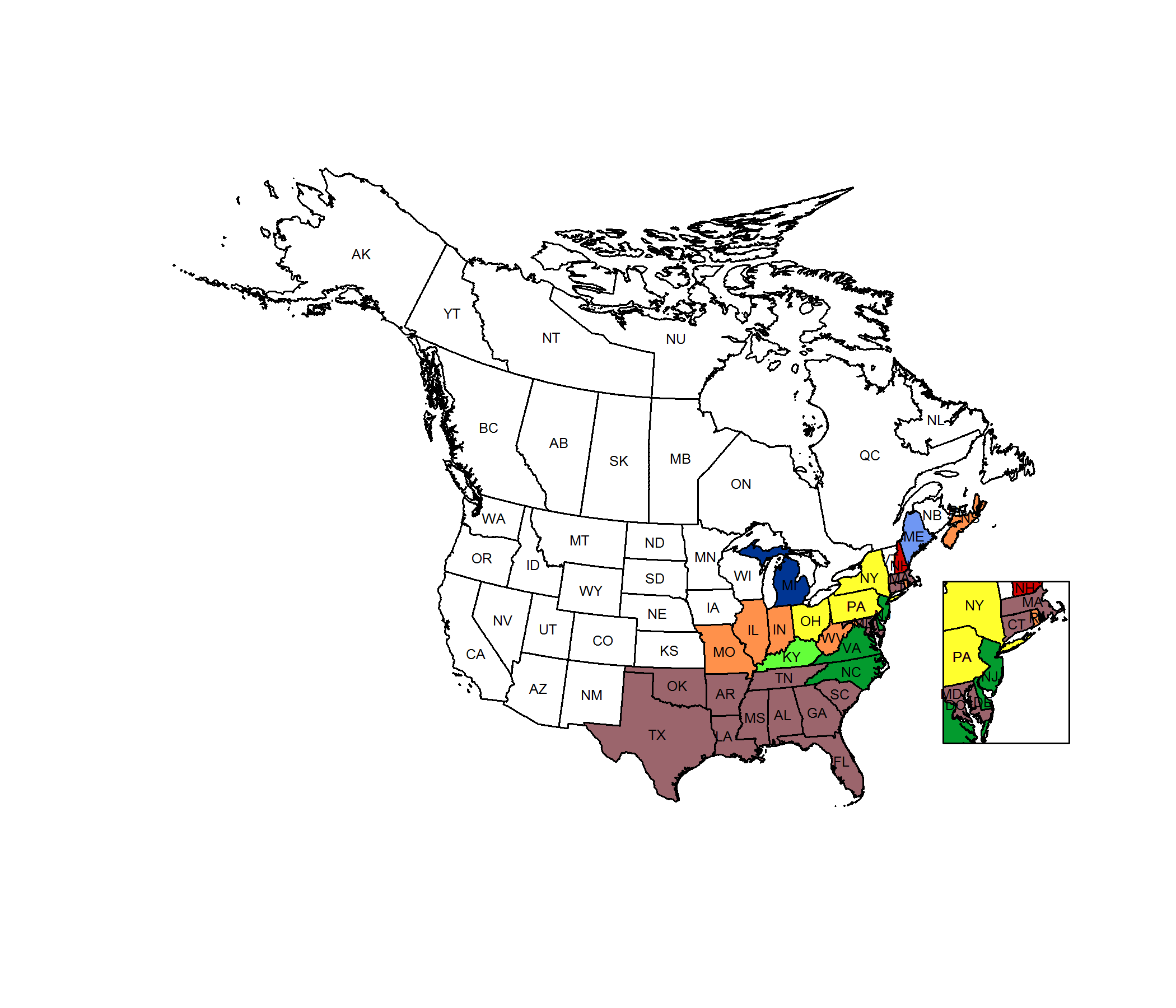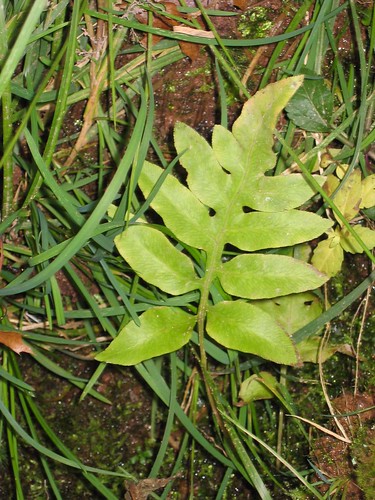 Species Factsheets
Species Factsheets
Lorinseria areolata
Netted Chainfern
State Status: N
PBS Status: Pennsylvania Rare (PR)
Federal Status:
Global Rank: G5
![]() rank interpretation
rank interpretation
State Rank: S3
Did You Know?
The common name for this species comes from the netted veins of the pinnae of both fronds and the chain-like rows of the sori.
Description
Netted chainfern (Lorinseria areolata) grows from 50-80cm in height and may form small colonies due to the presence of creeping underground stems. The leaves are easily distinguishable into vegetative and fertile types. The vegetative leaves have a typical fern-like appearance, being green, flattened, and divided into seven to twelve very deep lobes (or distinct leaflets on the lower part of the leaf) that are not further subdivided into smaller lobes. The leaf veins are conspicuous, and the fertile leaves of netted chainfern are dark colored, much narrower, not flattened and leaf-like, and have sporeproducing structures on their underside. The vegetative leaf of this species resembles the leaf of the sensitive fern (Onoclea sensibilis), a common species in Pennsylvania, but the lobes in netted chainfern tend to be alternately arranged along the leaf stalk while the lobes of sensitive fern tend to be oppositely arranged.
Rank Justification
Vulnerable in the nation or state due to a restricted range, relatively few populations (often 80 or fewer), recent and widespread declines, or other factors making it vulnerable to extirpation.
PABS
The PA Biological Survey (PABS) considers netted chainfern to be a species of special concern, based on the relatively few occurrences that have been recently confirmed and the wetland habitat. It has no PA legal rarity status, but has been assigned a suggested rarity status of Threatened by PABS. About thirty populations are currently known from the state.
Habitat
It grows in swamps, seepages, wet woods, boggy wetlands and along the margins of streamlets.
Survey Dates
Deciduous; sporulates July - February
Distribution
In Pennsylvania, the species has been documented historically in scattered counties,
particularly in the Delaware River drainage.

Management
The viability of populations of netted chainfern and its habitat may be enhanced by establishing buffers around wetlands, controlling invasive species, and protecting the natural hydrology surrounding wetlands.
Conservation Status Map


NatureServe. 2017. NatureServe Explorer: An online encyclopedia of life [web application]. Version 7.1. NatureServe, Arlington, Virginia. Available https://explorer.natureserve.org.
https://www.missouribotanicalgarden.org/PlantFinder/PlantFinderDetails.aspx?kempercode=v200
- NatureServe. 2018. NatureServe Explorer: An online encyclopedia of life [web application]. Version 7.1. NatureServe, Arlington, Virginia. Available at https://www.natureserve.org/explorer
- Pennsylvania Natural Heritage Program. 2018.
- Rhoads, A.F. and W.M. Klein, Jr. 1993. The Vascular Flora of Pennsylvania. American Philosophical Society, Philadelphia, Pennsylvania. Rhoads, A.F. and T.A. Block.
- 2007. The Plants of Pennsylvania: An Illustrated Manual. 2nd edition. University of Pennsylvania Press, Philadelphia, Pennsylvania.







